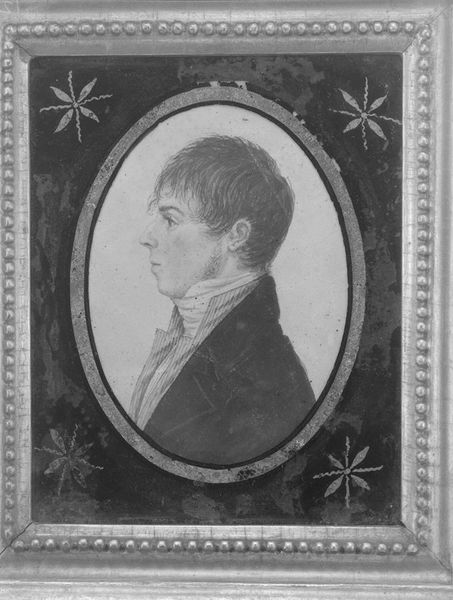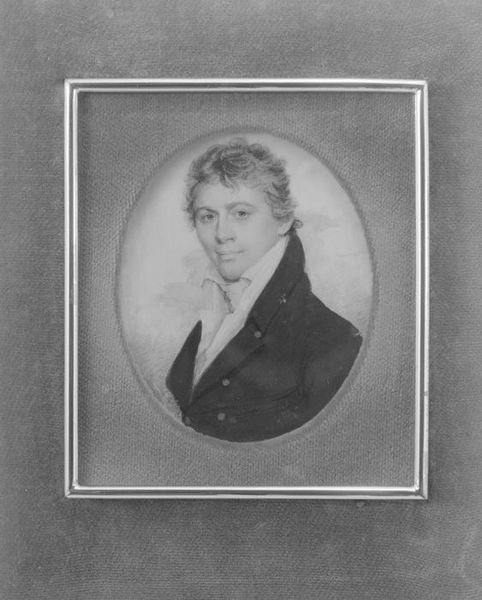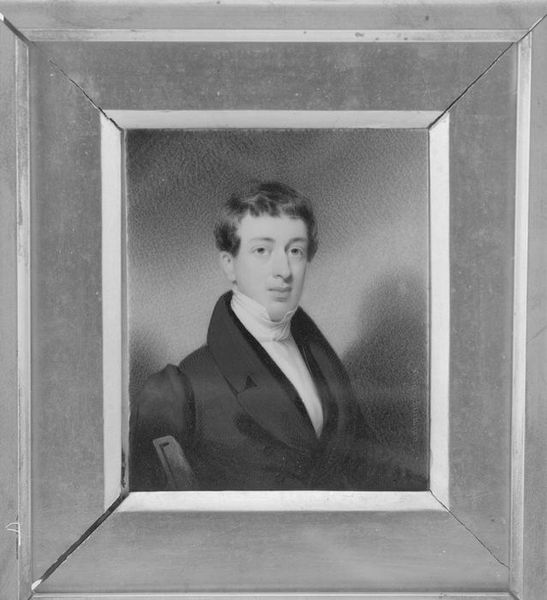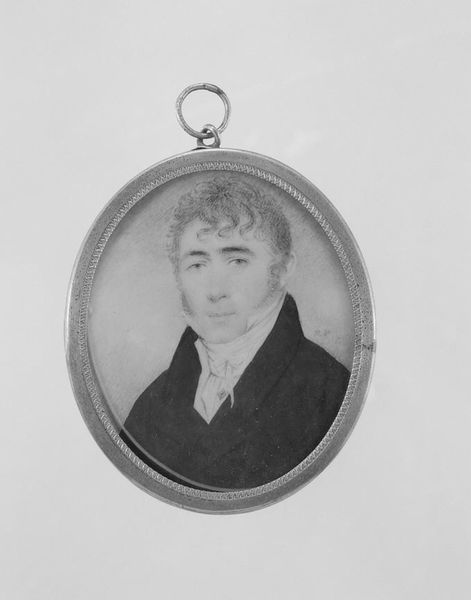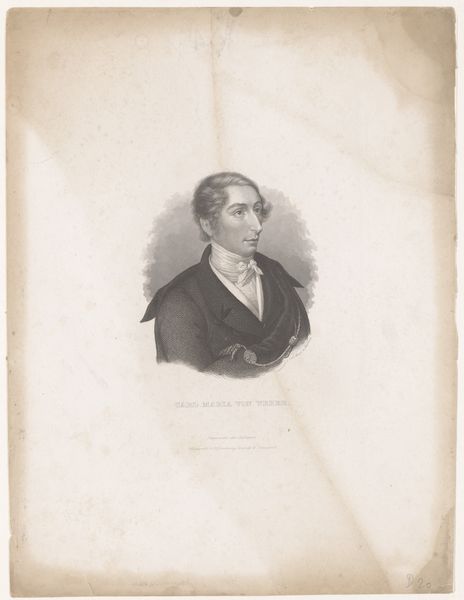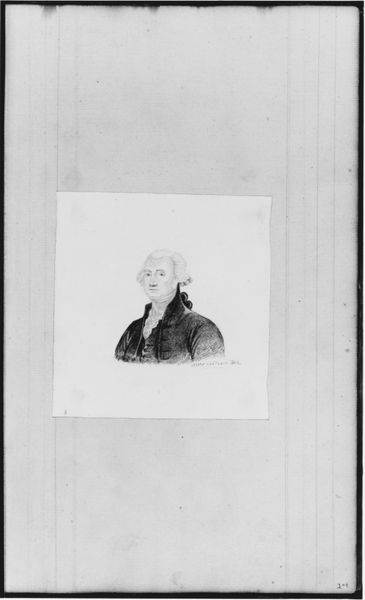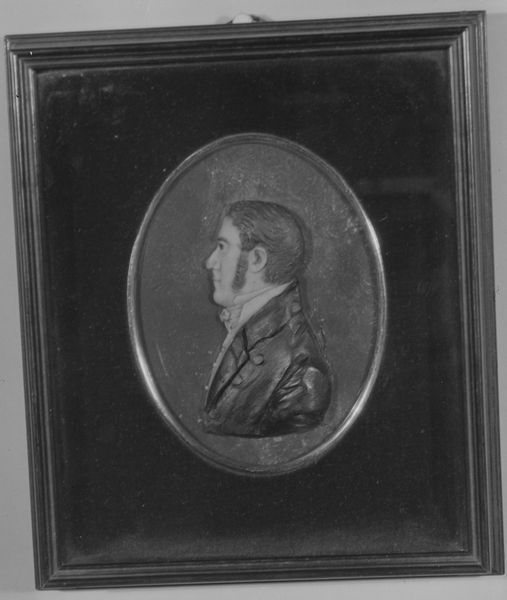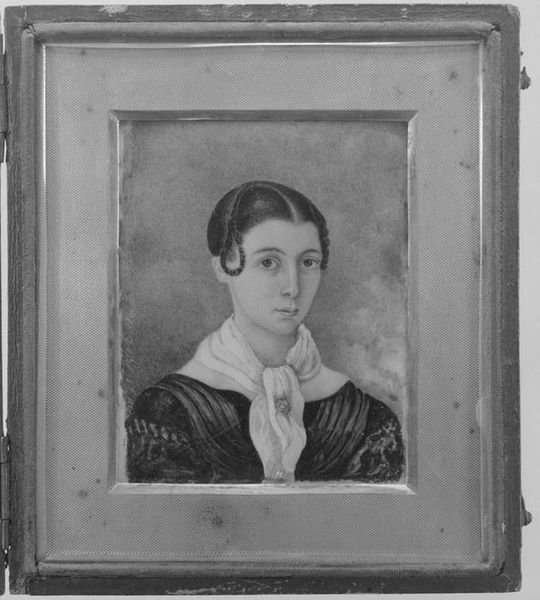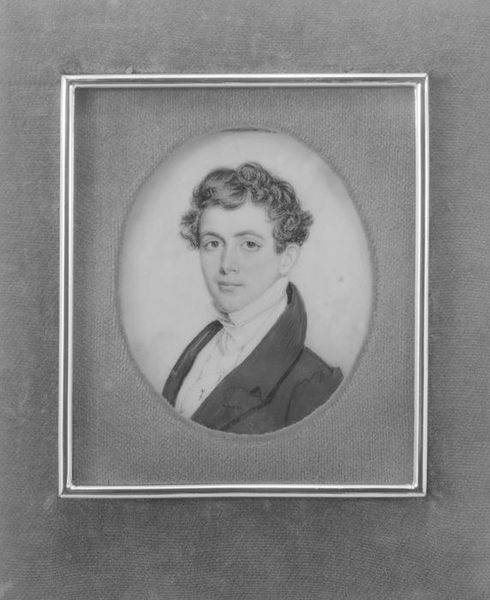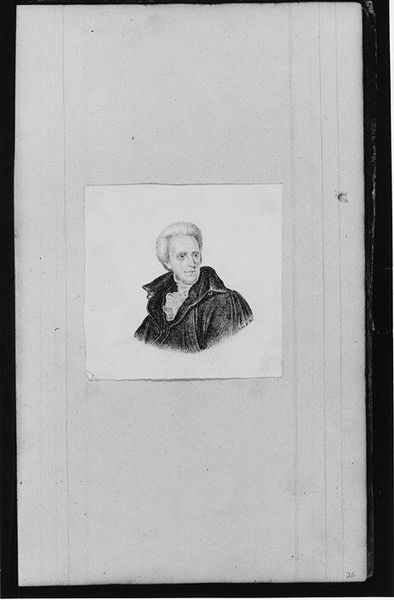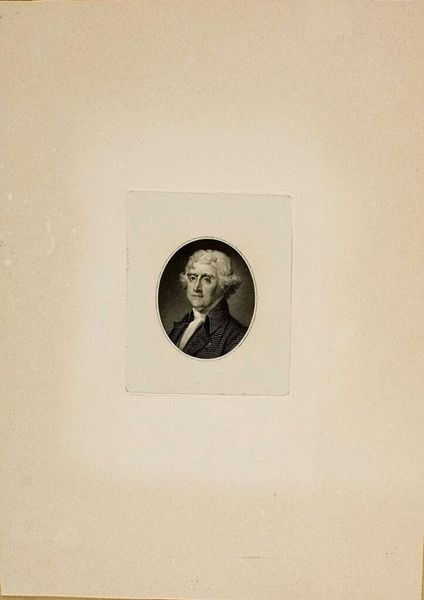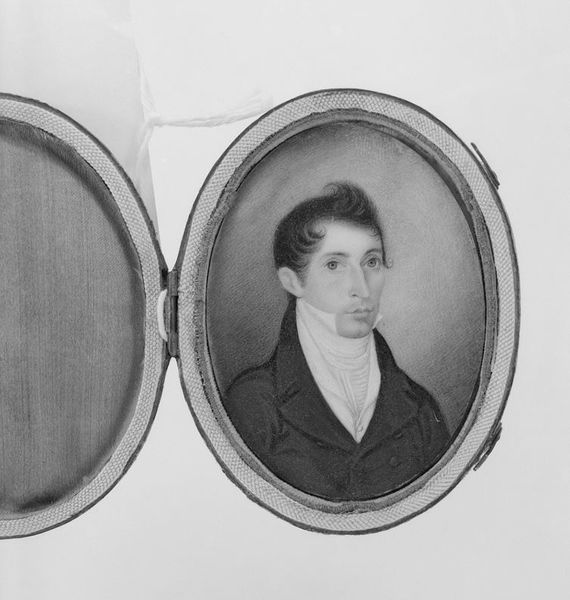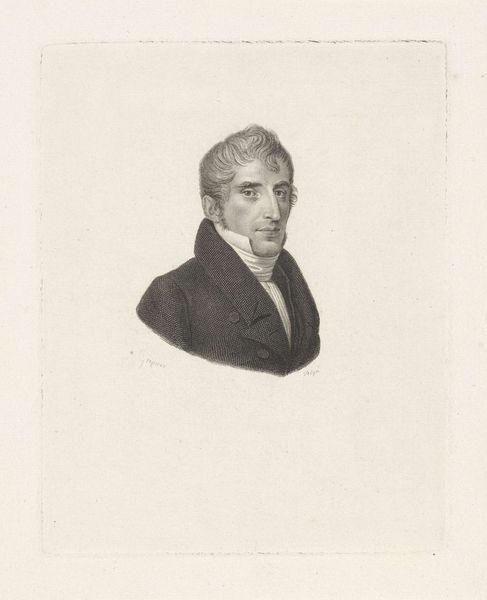
drawing, pencil, charcoal
#
portrait
#
drawing
#
charcoal drawing
#
romanticism
#
black and white
#
pencil
#
charcoal
#
academic-art
#
charcoal
Dimensions: 3 1/2 x 2 11/16 in. (8.9 x 6.8 cm)
Copyright: Public Domain
Curator: Allow me to introduce you to Benjamin Trott’s portrait of Benjamin Chew Wilcocks, a charcoal and pencil drawing dating from around 1805 to 1815. It currently resides here at the Metropolitan Museum of Art. Editor: My first impression is of a certain… distance. He seems lost in thought, doesn't he? The stark monochromatic palette only amplifies that mood of quiet introspection. Curator: Absolutely. The limited color palette, coupled with the tight composition, focuses attention solely on the sitter's face and form. Note how Trott masterfully employs chiaroscuro to sculpt Wilcocks' features, giving them a palpable sense of depth and volume. It's a prime example of Academic art ideals of the era. Editor: And consider the context of portraiture in that period. It was often a symbol of status, a way for the wealthy to project a specific image. Does this particular portrait, with its restrained aesthetic, communicate something different about Wilcocks' ambitions, or perhaps his social standing? Curator: It's possible. His slightly disheveled hair and casual dress suggest a departure from the rigid formality we often see in portraits of this period. Yet the meticulous detailing in his coat, the precision of line and form, clearly demonstrate the hand of a skilled and academically trained artist. These seemingly contrasting features enhance the composition in order to reveal underlying layers of societal performance of its time. Editor: Performance is a very useful framing there! Trott may be hinting at a more Romantic sensibility—a valuing of the individual, inner life—over mere societal convention. The asymmetry and off-center composition of Wilcocks’ gaze direct attention beyond the surface to some unseen, unknown object of contemplation. Curator: A tension arises through this reading between surface and essence that enhances the value we place on Wilcocks' portrait. His internal life remains a visual suggestion, alluding to an unknowable self. The visible surface gestures toward those otherwise obscured internal terrains of thought and emotion. Editor: Seeing him depicted with such nuance, invites us to consider our own relationship to public and private roles. We cannot but also be drawn into our own thoughts and wonderings through art encounters. Curator: Indeed. And perhaps that invitation to introspection, is the most valuable contribution that Trott’s artistry still gives us today. Editor: I quite agree. Thinking about these details helps illuminate this art encounter.
Comments
No comments
Be the first to comment and join the conversation on the ultimate creative platform.
